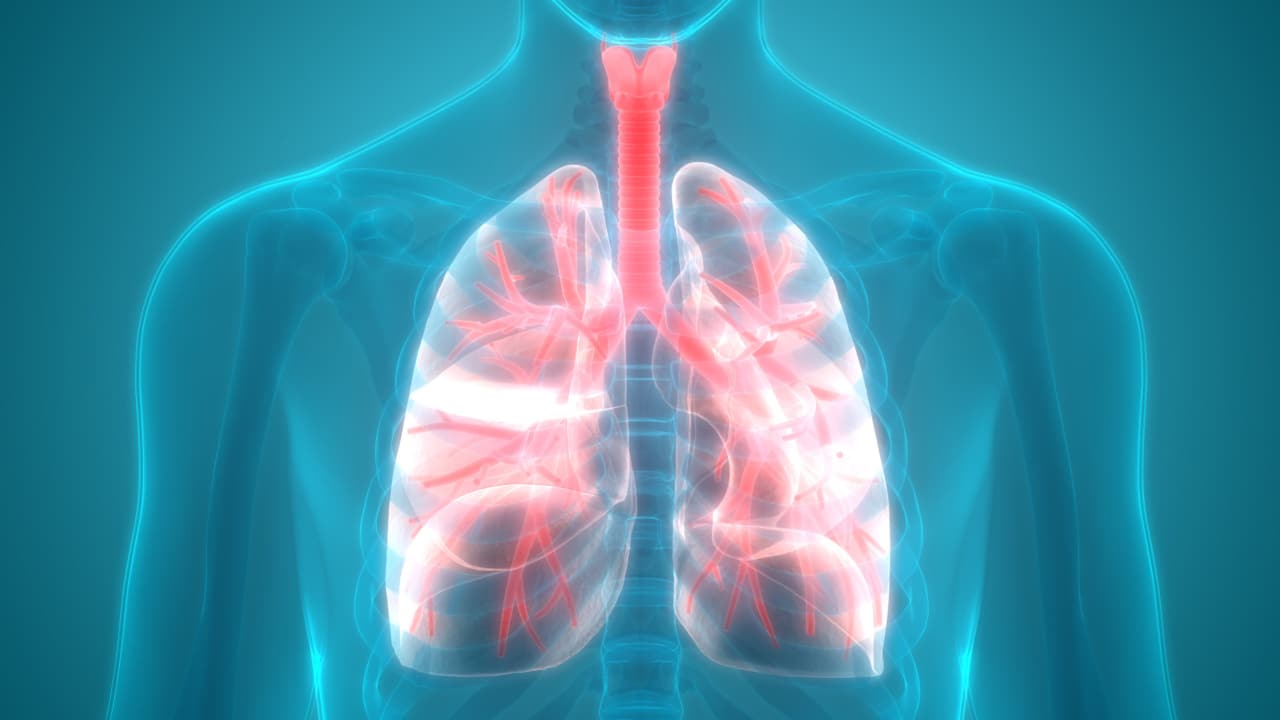Watch More! Unlock the full videos with a FREE trial
Already have an account? Log In
Included In This Lesson
Study Tools
Access More! View the full outline and transcript with a FREE trial
Already have an account? Log In
Associated Lessons
Hemoglobin (Hbg) Lab Values is mentioned in these lessons
Transcript
So the first thing we want to look at is what our normal values for our patients hemoglobin levels. Well for our patients it’s going to depend on whether they’re male or female. Male hemoglobin levels are a little bit higher than females, and their range is 13.5 to 16.5 grams per deciliter. Now for your female patient, their normal hemoglobin range is 12 to 15 g/dL.
Now let’s take a look at some patho for hemoglobin.
Now I don’t want you to be intimidated by this drawing but I want you to understand a couple of things about it. First off this is your hemoglobin molecule. So it’s attached to red blood cells, and its principal function is to carry oxygen. It’s got four subunits, called groups, and you have two alpha groups and two beta groups.
And like we discussed, because hemoglobin has such a high attraction to oxygen, we classify hemoglobin into two groups. If it has oxygen we call it oxyhemoglobin, and if it doesn’t have oxygen attached, we collect deoxyhemoglobin. These two classifications play into what we’re gonna talk about next which is something we call the oxyhemoglobin dissociation curve, so let’s get into it.
So the first thing we’re gonna look at is this graph right here. This is called the Oxyhemoglobin dissociation curve. And what it does is it shows the relationship between oxygen saturation over here on the left, and the relationship to the partial pressure of oxygen in the blood stream. If you have an area of high oxygen pressure, like in the lungs that’s going to demonstrate a higher partial pressure of oxygen. Somewhere out in our extremities is going to have a low level of partial pressure of oxygen.
The thing I want you to recognize is that as this curve goes up the oxygen level goes up and then plateaus. So there is a level at which the partial pressure of oxygen cannot really increase oxygen saturation.
Now this comes into play when you have changes in physiology. Sometimes this curve can move right which is called a right shift, or it can move left which is called a left shift. Now what I want you to recognize is that when you have something that causes a right shift what happens is because there is a higher partial pressure of oxygen, it means that there is a lower attraction of hemoglobin to oxygen. It basically means that the oxygen is the less sticky and it doesn’t want to stick to the hemoglobin because it’s not necessarily needed as much. If we look at a left shift, the partial pressure of oxygen is lower which means that that hemoglobin needs to stick to that oxygen because it doesn’t wanna let go because it needs it.
So what causes right and left shifts? Let’s look at a right shift. So changes in pH, body temperature, and CO2 can all cause shifts. In a right shift, you were going to have a decrease in pH, an increase in CO2, or an increase in body temperature. So here’s an example. Let’s say you have somebody who’s working out. When they work out they have a release of lactic acid due to muscle use, so that drives the blood pH down. The other thing is that you have an increase in respirations so you have a higher CO2 level that also decreases pH. And the other thing is your core body temperature is going to go up because you’re working out. Now all of these things are going to shift the curve to the right, therefore making the oxygen less sticky. Because it is less sticky it means that the oxygen can be released to the tissues more easily, therefore delivering the oxygen more efficiently to those tissues that need it. Now with a left shift you’re going to have the opposite. So low levels of CO2, and increased pH, or any decreased body temperature are all going to make those hemoglobin molecules want to hold onto that oxygen in a little bit longer.
The big takeaway from this is that first that you understand what happens when the curve shifts and left, and also to be aware of things that would cause a right or left shift. Because when you’re aware of these things, you can be more inclined to make better predictions about the outcomes of your patient.
So what kind of special considerations when we think that we would need to do for this blood sample when we’re sending it off to the lab? Well it’s going to be sent in a lavender top tube. Just like with a red blood cells, we want to be careful that we’re not forcefully introducing our sample into our blood tubes because it will cause hemolysis, and it will break down the red blood cells. And because the hemoglobin is attached directly to the red blood cells, it’s going to affect our hemoglobin outcomes.
So be aware of the technique that you use to draw the sample, so think about the needle size that you’re using, or if you’re getting it from an IV site, or a central line, or what kind of needle or blunt tip that you’re going to use in order to introduce those samples into your collection tubes.
What happens if our hemoglobin values are abnormal?
If your hemoglobin samples are results are elevated, you could be looking at something mild like dehydration. Remember because hemoglobin is a touch the red blood cell, if your plasma volume is decreased because of dehydration your red blood cell percentages go up and your hemoglobin could be slightly elevated. There is a condition called Pollis Atheneum vera where you have and overstimulation of red blood cell production. This will cause your hemoglobin values to be really high. The most common form of treatment for this is bloodletting, or directly pulling large quantities of blood directly from a patient to help reduce the overall blood volume in red blood cell count. The other thing that’s often recommended is medications or even simply increasing hydration.
Because a pulmonary disease, you have an increased need for oxygen, therefore your bone marrow kicks in and says you need more red blood cells. Therefore if you have all condition that’s affecting her lungs like COPD or pulmonary fibrosis, you are going to have an increase in Redlands health and you’re also going to have that increase in hemoglobin.
Know what if your hemoglobin levels are low? The first thing that you should probably look at is your patient. Then figure out do they have some sort of blood loss in. That’s going to be the quickest most reasonable exclamation for a little hemoglobin. You could also have conditions like sickle cell anemia, or a plastic anemia where you have a problem with the red blood cells himself. Your patience can also have different types of cancers that will affect their rents out and hemoglobin levels. Another condition is called thalassemia, which is a genetic disorder that affects her red blood cells and hemoglobin production.
But for patients that have decreased hemoglobin levels, the most common form of treatment is to literally give them packed red blood cells. If you’re patient is bleeding from some sort of sorts, you’re going to stop the bleeding first, and then you’re going to replenish your patience red blood cells, and that should help increase their overall red blood cell and hemoglobin concentrations.
Now for our nursing concepts for this lesson, we focused a lot on lab values and oxygenation.
Okay so let's recap.
Carries oxygen and it's the primary carrier for the oxygen when it's attached to the red blood cells. Also carries other gases but we want to focus on its ability to carry oxygen out to those tissues.
If you have a patient has low red blood cells you're also going to have low hemoglobin. If those are me caesar decrease your hemoglobin will be too.
Remember in your oxyhemoglobin dissociation curve you're going to have decreased attraction for the oxygen if you have a right shift and you're going to have increase attraction for the oxygen to the hemoglobin if you have a left shift.
Finally, think about Form and Function. If you have a patient who has problems with a red blood cells, or their ability to carry oxygen because of the problem with hemoglobin, you got to correct the problem first, and then focus on measuring your hemoglobin. So if your patient has some pretty significant blood loss from injury, you got to get more blood into them and stop the bleeding.
And that's our lesson on hemoglobin.Make sure you check out all the resources attached to this lesson. Now, go out and be your best selves today. And, as always, happy nursing!!
View the FULL Transcript
When you start a FREE trial you gain access to the full outline as well as:
- SIMCLEX (NCLEX Simulator)
- 6,500+ Practice NCLEX Questions
- 2,000+ HD Videos
- 300+ Nursing Cheatsheets
“Would suggest to all nursing students . . . Guaranteed to ease the stress!”











